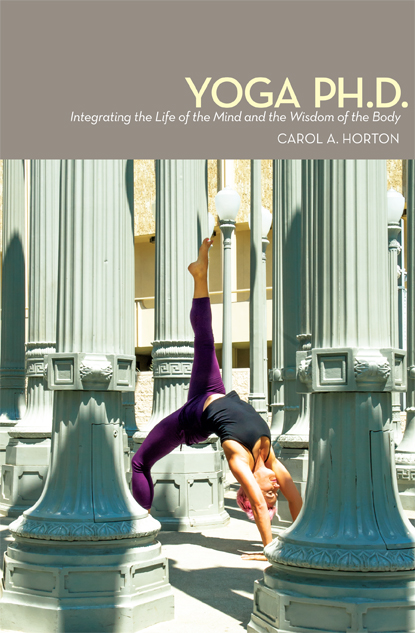When it comes to the popular understanding of yoga history today, it seems that modern yoga just can’t get any respect.
This rankles me. Because as I’ve studied the history, tracing yoga as we know it back to its most immediate roots in late 19th-early 20th century India, I’ve come to believe that the modernization of yoga that occurred at that time was, in fact, a really good thing.
Yet from the tone of the discussion surrounding the publication of Mark Singleton’s groundbreaking (as well as, to a lesser extent, other recent historical studies) you wouldn’t think this could possibly be the case. Rather than seeing the modernization of yoga as a positive, creative, and even visionary response to a rapidly changing world, most practitioners view it with either indifference or hostility.
Of course, there’re always exceptions to the rule. But from what I’ve seen, the most common response to the compelling historical evidence that asana as practiced today only dates back to the early 20th century is either to 1) shrug off one’s initial disillusionment and not care, or 2) denounce this fact as evidence of the corruption and degeneration of an ancient spiritual tradition.
And this, I believe, is a shame. Speaking as a practitioner, I believe that there’s much wisdom and inspiration to be found in the short but pivotal lineage of teachers who were formative in the making of modern yoga, stretching from Swami Vivekananda in the late 19th century to Sri T.Krishnamacharya in the mid-20th.
Boiled down to essentials, I believe that these teachers revolutionized yoga by 1) democratizing asana and meditation by making them newly accessible to all, and 2) insisting that science and spirituality are complementary practices, and seeking ways to forge new accommodations between them.
Considered as a historical development, this synthesis of yoga, democracy, and science was new – deliberately modern, and culturally progressive. Most fundamentally, it embodied a commitment to evolving yoga in ways that would make it most relevant to a rapidly industrializing, globalizing world.
Realizing this vision required synthesizing ideas and practices drawn from both Eastern and Western cultures. This fact of hybridization is precisely, I believe, what enabled yoga to become such an important force in the world today. Yet, many serious practitioners remained wedded to the belief that any and all Western influences on the Eastern tradition of yoga are necessarily negative and corrupting.
This, I think, is simply wrong – both in terms of how yoga historically developed, and how it manifests in society today. When it comes to the needs and concerns of the contemporary world, synthesizing East and West opens up critical new space for creative synergy and change. In contrast, trying to keep cultural traditions separate, pure, and isolated is not only doomed to failure, but breeds insularity, defensiveness, and mistrust.
Particularly given the contemporary yoga community’s tendency toward binary East/West thinking, it’s important to emphasize that such processes of hybridization work both ways. Consequently, the development of modern yoga wasn’t as simple as merging a wholly Eastern tradition (yoga) with purely Western ones (democracy and science). Rather, as the process of integration unfolded, each of these categories was hybridized within itself. Concretely, even as yoga incorporated new ideas and practices drawn from the West, the understandings of democracy and science it embodied became partially transformed by the East.
If modern yoga is indeed a partially Westernized practice, in other words, it’s also one that’s played an important role in partially Indianizing the West. Rather than rejecting such syntheses as impure and corrupting, I believe we need to celebrate their creativity, and seek ways to keep them generative and meaningful.
Throwing Babes to the Crocodiles
 |
| Swami Vivekananda |
When it comes to the history of modern yoga, it makes sense to start with Swami Vivekananda. An exceptionally important historical figure, Vivekananda more or less single-handedly succeeded in laying the philosophical groundwork for modern yoga, as well as generating a seminal wave of interest in it, both in India and the U.S.
Born in Calcutta in 1863, Vivekananda remains a revered figure in India, where he’s regularly referred to with such honorifics as the “Father” of modern yoga and Indian nationalism (a notably significant combination). In the U.S., however, Vivekananda is no longer well known. Although he caused a sensation in the late 19th century, most yoga practitioners today have never heard of him. This is a shame, as Vivekananda’s formative role in the making of modern yoga is a fascinating and revealing story . . .
Yoga and Democracy
While rooted in ancient tradition, Vivekananda’s presentation of yoga was deliberately crafted to speak to modern concerns. His belief that everyone could benefit from yoga broke with traditional schools of thought that held that practices of mental training and concentration should be revealed to only an initiated few. Yoga, Vivekananda insisted, should be taught and studied just like any other body of knowledge. “There is neither mystery nor danger in it,” he wrote. “So far as it is true it ought to be preached in the public streets, in broad daylight.”
This push to democratize yoga represented a radical move against the Hindu orthodoxy of the day. Indian traditionalists had opposed even Vivekananda’s presentation to the Parliament of Religions. “The Brahmanical priesthood raged and fumed against him as it is forbidden to a Hindu to cross the ‘Black water,’” recounts Bhupendranath Datta. “The educated Hindus . . . looked askance and criticized him as deviating from the orthodox representation of Samatama Dharma” (traditional religious teachings).
Yogic practices of meditation were even more closely guarded. Traditionally, yoga required an initiatory process in which carefully selected disciples committed themselves to learning at the feet of an enlightened guru. Even Ramakrishna, the Indian mystic who was Vivekananda’s own spiritual teacher, believed that meditative yoga was not suitable for “householders” – that is, ordinary people who aren’t monks. Vivekananda, in contrast, believed that if the great yogis of the past had been able to attain “super-consciousness,” then “you and I can get the same.” “Not only is it possible, but every man must, eventually, get to that state,” he wrote. “Experience is the only teacher we have.”
By writing and speaking about yoga, Vivekananda changed it from an esoteric discipline that could only be learned through a guru-disciple relationship into a spiritual technology available to all. Reflecting back on why he decided to speak at the World Parliament of Religions, Vivekananda replied:
First of all, to bring out the gems of spirituality that are stored up in our books and in the possession of a few only . . . I wanted to make them popular. I want to bring out these ideas and let them be the common property of all, of every man in India, whether he knows the Sanskrit language or not.
Similarly, in an 1895 letter to a friend, Vivekananda explained that he believed that “out of bewildering Yogi-ism must come the most scientific and practical psychology – and all of this must be put in a form so that a child can grasp it. That,” he avowed, “is my life’s work.”
If Vivekananda’s insistence on democratizing yoga ran counter to Indian tradition, it also shocked Western sensibilities that viewed Enlightenment rationalism as the height of human knowledge, and conventional Christianity as the only true religion. Western civilization, it was widely assumed, was the repository of humanity’s most important universal truths. Consequently, it shouldered the responsibility of exporting these truths to the rest of the (presumably benighted) world. From this perspective – which, at the time, seemed perfectly respectable – British dominion over India didn’t constitute exploitation and oppression. Rather, it was shining the light of Western civilization into the darkness of the heathen East.
Vivekananda attacked these assumptions on multiple fronts. And, his claim that yoga embodied a universal science of consciousness was central to them all. The “meditative state” attainable through yoga, he wrote, “is the highest state of existence . . . It is only the contemplative, witness-like study of objects that brings us to real enjoyment and happiness.” As such, yoga was deemed capable of accessing the universal ground of religious experience; one that the West self-servingly imagined attainable through Christianity alone. Yoga, consequently, demonstrated that both rational and extra-rational experiences were valuable capacities of the human mind.








